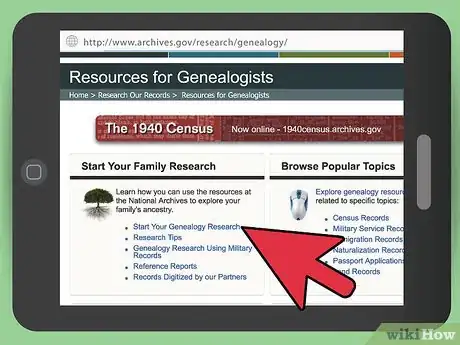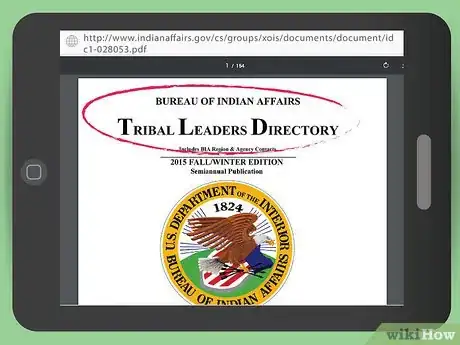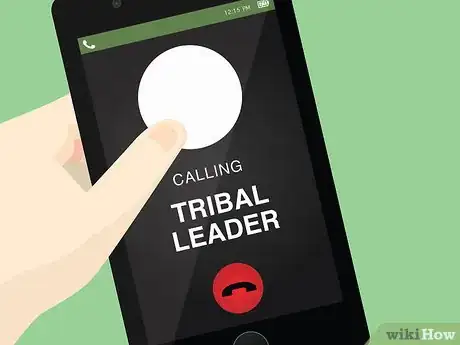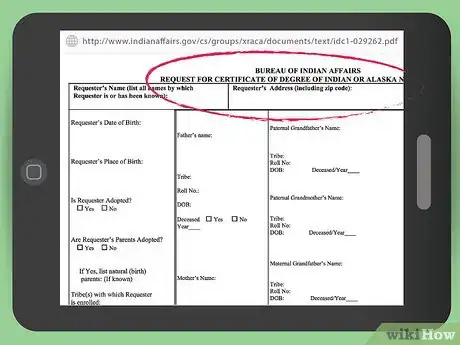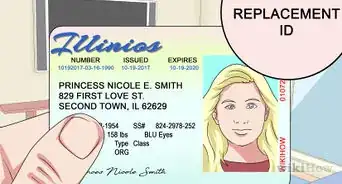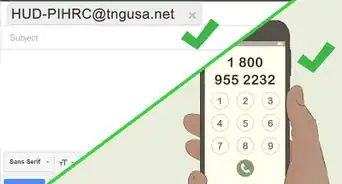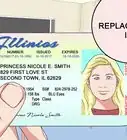This article was co-authored by Clinton M. Sandvick, JD, PhD. Clinton M. Sandvick worked as a civil litigator in California for over 7 years. He received his JD from the University of Wisconsin-Madison in 1998 and his PhD in American History from the University of Oregon in 2013.
This article has been viewed 51,328 times.
There are many reasons to verify your Native American (American Indian or Alaska Native) heritage, such as enrolling as a member of a federally-recognized tribe or just learning more about your ancestry. You can do research to trace your lineage back to someone who is or was an enrolled member of a tribe. Then you can choose to apply for membership yourself if you meet the tribe's requirements.
Steps
Researching Your Ancestry
-
1Consider genetic testing. Genetic testing cannot conclusively or legally prove that you are of Native American descent. There are no particular genetic markers that are unique to Native Americans, but you can compare your genetic makeup against that of another individual or against a database maintained by the testing company to find the probability of a familial relationship between yourself and known Native Americans. You may be able to use genetic testing to reinforce or disprove your belief that you are of Native American descent before you proceed with your research.
-
2Start searching at home. Your goal is to trace your ancestry backwards through your parents, grandparents, or further back to locate a directly related ancestor who is or was a member of a Native American tribe. Begin collecting the names and dates of birth, death, and marriage of your parents, grandparents, great-grandparents, and so on. Consult the following sources of information:
- Relatives who might know the answers to your questions or have family records in their possession;
- Vital records, such as birth, death, and marriage certificates; and
- Scrapbooks, including pictures, newspaper clippings, letters, and diaries.
Advertisement -
3Search online. More and more documents are becoming freely available on the Internet. Use a search engine to find references to your ancestors. You can also use social-networking sites such as Facebook and LinkedIn to contact distant relatives and people who may be related to you.
- For example, if you find a reference to your great-grandfather in a newspaper's online archive in another state, you might consider sending messages to social-network users who live in that state and share your great-grandfather's surname.
-
4Consult local records. Schools may have enrollment records that contain information about your ancestors. Churches keep baptismal records of those they baptize. The local courthouse may have records of deeds, wills, and property conveyances. Contact these institutions and ask if you can make an appointment to view their records or if a custodian of the records can search through them for you.
-
5Search federal records. The U.S. National Archives maintains a website at http://www.archives.gov/research/genealogy/ where you can learn how to access federal records for your genealogical research. Some records are available online. Others must be accessed in person or by mail. The following records may be of particular interest in your search:
- Census records
- Records of the Office of the Secretary of the Interior
- Records of the Bureau of Indian Affairs
- Military service records
- Passenger arrival records
- The Dawes Commission Rolls (containing records of members of the Cherokee, Chickasaw, Choctaw, Muscogee (Creek), and Seminole nations through 1907)
-
6Request access to tribal records. Once you have identified your ancestry's tribal affiliation, there are several sources of records relating to that tribe. You can contact a tribal leader listed in the Bureau of Indian Affairs' Tribal Leaders Directory to find out what records are available and how to access them.
- You can also contact the National Archives and Records Administration (NARA) about its Native American Indian records collection, which includes census, school, and allotment records. Contact information is available at http://www.archives.gov/contact/.
- The Bureau of Indian Affairs (BIA) also has probate records, some membership rolls, and judgment distribution rolls related to settlements of tribal claims against the United States. The BIA's membership rolls are not complete and do not have supporting documents but may be useful in your search. Contact information is available at http://www.indianaffairs.gov/ContactUs/index.htm.
Enrolling as a Tribe Member
-
1Contact the tribe to learn the requirements. Each tribe has its own enrollment-eligibility rules and maintains its own membership records. The two most common requirements are lineal descent from someone listed on the tribe's original list of members and lineal descent from someone who descends from someone who appears on the original list. Other conditions vary from tribe to tribe but may include blood quantum (for example, you must be one-quarter Navajo to enroll as a member of that tribe), residency, and continued contact with the tribe.
- Contact a representative of the tribe you wish to join, and request information about their eligibility requirements.
- If you can trace your ancestry to more than one tribe and are eligible for enrollment in more than one, inquire whether those tribes allow you to be enrolled in more than one tribe at a time.
-
2Gather vital-statistics records. To prove your ancestry when you apply for tribe membership, you will need to present vital-statistics records (birth and death certificates) in an unbroken chain linking yourself to your ancestor who was listed on the tribe's membership roll. To request copies of vital-statistics records, contact the department, bureau, or office in your state that keeps those records. Ask the representative of the tribe how to submit vital-statistics records with your application.
- 48 states (excluding Vermont and Wyoming) as well as Washington D.C., American Samoa, and Puerto Rico have outsourced the records-ordering process to https://www.vitalchek.com/. You can search for and order records online by filling out a form and paying a service fee.
-
3Apply for a CDIB card. Once you have established your tribal ancestry, you can apply for a Certificate Degree of Indian Blood card from the BIA office that provides services to the tribe in which you are claiming ancestry. [1] Fill out an application available at https://www.bia.gov/sites/bia.gov/files/assets/public/raca/online_forms/pdf/Certificate_of_Degree_of_Indian_Blood_1076-0153_Exp3-31-21_508.pdf. Follow the instructions for how to list your ancestors, and attach their birth or death certificates.
- To locate the BIA office to which you should submit your application, consult the Tribal Leaders Directory at https://www.bia.gov/tribal-leaders-directory.




